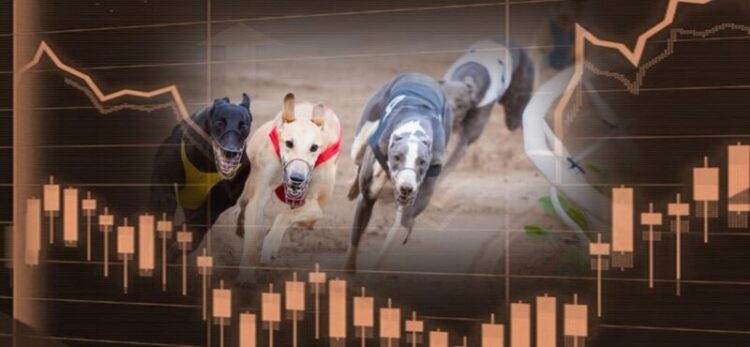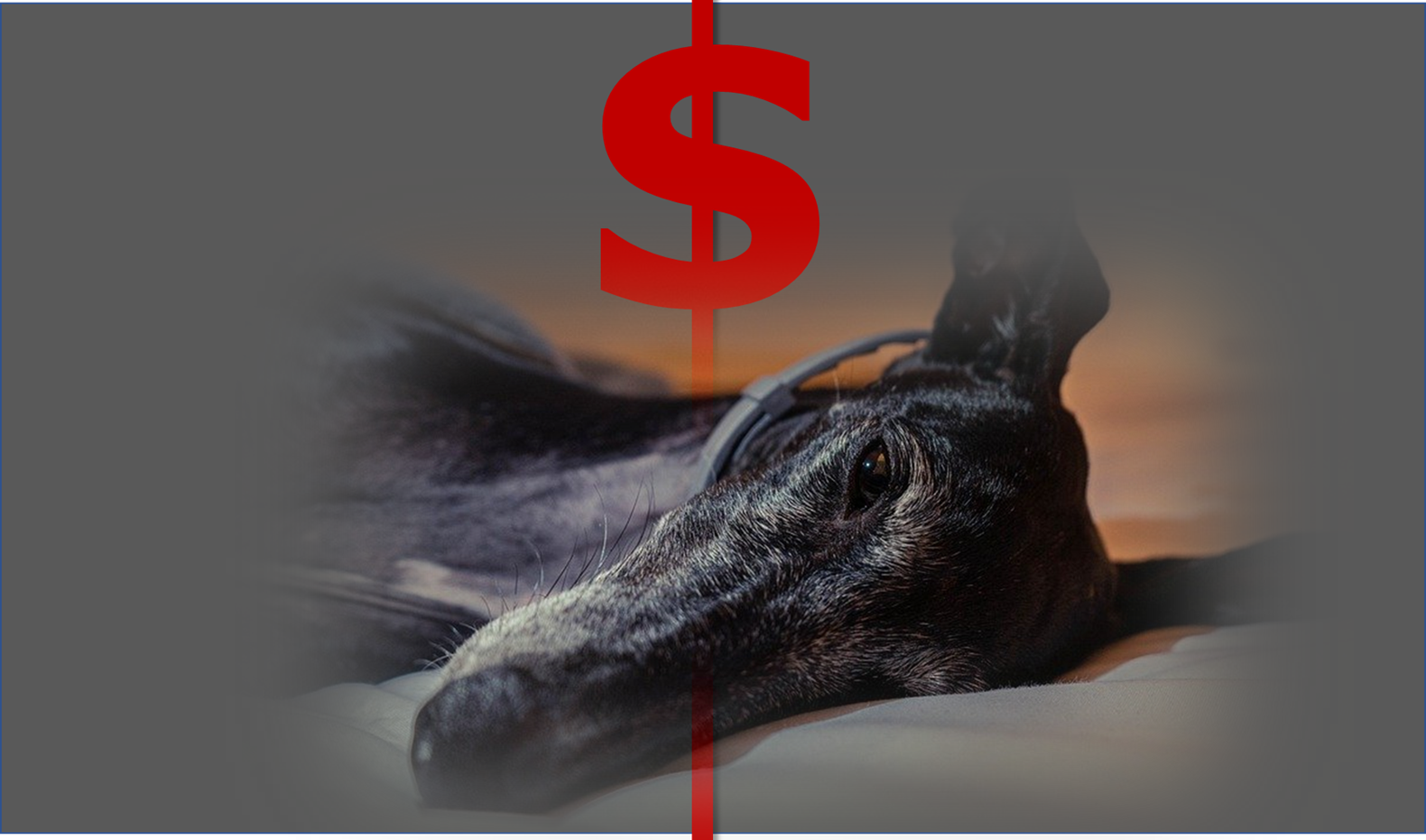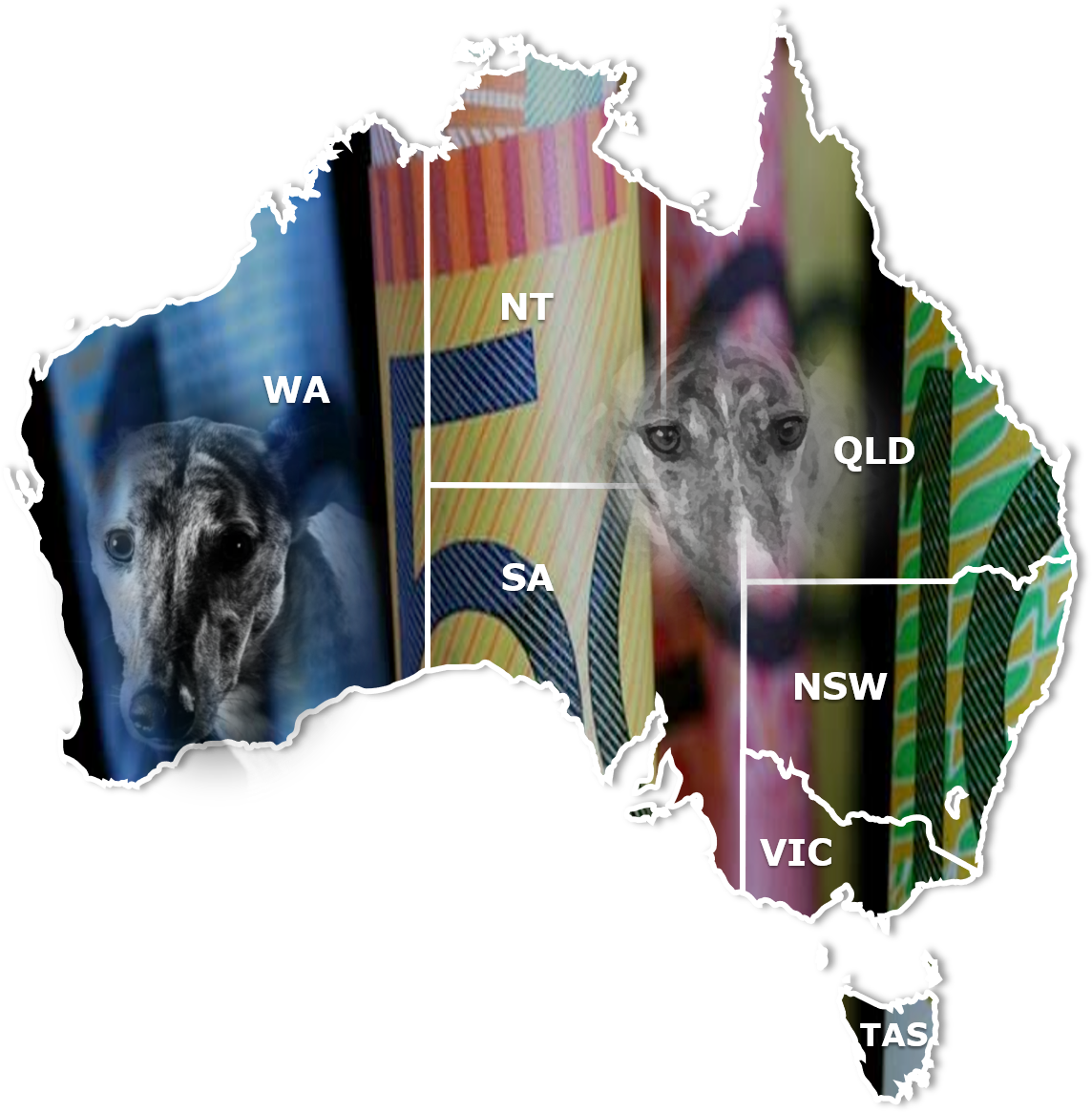
See here for CPG’s series of ‘Smoke and Mirrors’ reports challenging the misleading data used by state governments to justify the use of public money to support dog racing, an industry most people reject.
The dog racing industry commissions a regular supply of industry reports which are then used by state premiers to justify subsidising the industry with taxpayer dollars.
Most media outlets present these reports as fact, while only a few question their veracity. Yet, greyhound industry IER reports use inaccurate job data, exaggerate the perceived net benefits arising from the greyhound racing industry, omit key information and use bad economic methodology.Inaccurate job data

IER reports inflate the amount of people employed in the greyhound racing industry across Australia, so it’s worthwhile checking job claims against Australia Bureau of Statistics (ABS) employment data.
In its 2021 Tasmanian report, IER claimed there were 962 full-time jobs in the Tasmanian racing industry [1]. ABS data from the same period indicates only 182 people employed [2]. Similarly, in IER’s 2022 Victoria report, IER claimed 35,000 individuals were employed in the racing industry [3]. Victorian Premier Dan Andrews repeated this claim in a media release of 2 May 2023. Actual ABS employment data puts the average figure at 3,296 individuals, representing an overstatement by IER of more than 10x.
These inflated numbers are a result of IER counting the same individuals doing multiple roles, as if they were separate people. The study methodology section contains a single throwaway line acknowledging this duplication, “There is some level of duplication in some of the participation categories resulting from an inability to deduplicate individual databases.” [4]
Omission of key information - negative spillovers
- lost productivity and impact on work output – estimated to be $7b in Victoria alone [5],
- significantly less money for local communities and families – Australians lose $24.9b a year on gambling with the highest per capita losses in the world [6],
- government expenditure to help problem gamblers and minimise harm[7],
- 22% of Victorian mental health sector costs are due to problem gambling[8],
- government expenditure on services to address the demonstrated link between gambling in communities and increases in bankruptcy rates, violent crime and property theft[9],
- families of problem gamblers suffer from financial, relational and emotional problems[10].
Omission of key information - a government funded industry
Taxpayer subsidies are a major revenue source for the greyhound and racing industry in Australia. For example, Tasmanians provide $58.68 per capita in taxpayer funding to Tasracing each year[11].
IER reports deliberately limit any mention of this. Government grants are mentioned only twice in the 114 page Queensland IER report with zero additional context given[12]. In contrast, the tax revenue the industry raises is mentioned repeatedly throughout the report.
Mainstream economists generally regard large subsidies as an inefficient waste of government funds, except when an industry provides an otherwise missing social benefit (such as in healthcare) or is critically important and/or vulnerable (such as agriculture is to weather and climate).
It is hard to argue that supporting a greyhound racing/gambling industry fits this definition of being critically important and thus it is not worthy of any subsidies from the Australian taxpayer.

State governments pour millions of taxpayer dollars into keeping the brutal greyhound racing industry afloat
Read more here
Bad economic methodology - substitution
IER reports present expenditure within the industry as irreplaceable value added to the Australian economy. In reality, if this money is not spent on greyhound racing it wouldn’t just disappear. It would be spent elsewhere and potentially be put into industries that deliver better social and economic benefit.
This is because different products vary across an economic spectrum known as substitution. The more we are able to substitute a product for another, the less irreplaceable it is to the economy. For example, petrol and healthcare cannot be readily substituted and would inflict a large toll on a community if removed.
Conversely, if we were to remove butter from an economy, we would likely survive just fine by substituting with margarine. The greyhound racing industry is much more like butter than petrol and healthcare. There is extensive economic evidence demonstrating that wagering expenditure serves to remove funding from more socially and economically beneficial industries in a community.[13]
Bad economic methodology - multipliers
IER reports also use multipliers to inflate economic benefits. When an individual or business spends money on a product, that money is used to pay staff who themselves then spend money on goods and services, creating a flow-on effect. Essentially, single instances of spending tend to be multiplied across the economy.
Multipliers are misused to exaggerate expenditure in an industry by attempting to estimate these flow-on effects to other industries.
When criticising an IER report on the Tasmanian dog racing industry, the Tasmanian Treasury explained this issue best by stating if a similar multiplier was applied for all existing industries in Tasmania, the resulting estimated size of the Tasmanian economy would be two to three times bigger than the actual size. [14]

An Australian Government Productivity Commission report “On input-output tables: uses and abuses” looks at the flaws in using a multiplier approach to measure an industry’s economic contribution, employment and income.
It states that “Abuse primarily relates to overstating the economic importance of specific sectoral or regional activities". It goes on to say that, despite its limitations, there is widespread use of multiplier analysis to “justify or support calls for injections of taxpayer funding”.
Evidence
- IER. (2021). Size and Scope of the Tasmanian Racing Industry.
- ABS. 2022. EQ06 – Employed persons by Industry group of main job (ANZSIC), Sex, State and Territory, November 1984 onwards.
- IER. (2022). Size and Scope of the Victorian Racing Industry.
- Ibid., p 26.
- Browne, M., Greer, N., Armstrong, T., Doran, C., Kinchin, I., Langham, E., & Rockloff, M. (2017). The social cost of gambling to Victoria.
- NSW Parliamentary Research Service. (2020). Gambling: an update.
- Browne, M., Greer, N., Armstrong, T., Doran, C., Kinchin, I., Langham, E., & Rockloff, M. (2017). The social cost of gambling to Victoria.
- Victorian Responsible Gambling Foundation. (2019). Submission to the royal commission into Victoria’s mental health system.
- Kearney, M. S. (2005). The economic winners and losers of legalized gambling. National Tax Journal, 58(2), 281-302.
- Australian Institute of Family Studies. (2014). The impact of gambling problems on families.
- Tasmanian Department of Treasury and Finance. (2020). Tasracing Pty Ltd – A desktop review of the costs and functions of Tasracing.
- IER. (2022). Size and Scope of the Queensland Racing Industry.
- Marionneau, V., & Nikkinen, J. (2020). Does gambling harm or benefit other industries? A systematic review. Journal of Gambling Issues.
- Tasmanian Department of Treasury and Finance. (2020). Tasracing Pty Ltd – A desktop review of the costs and functions of Tasracing.